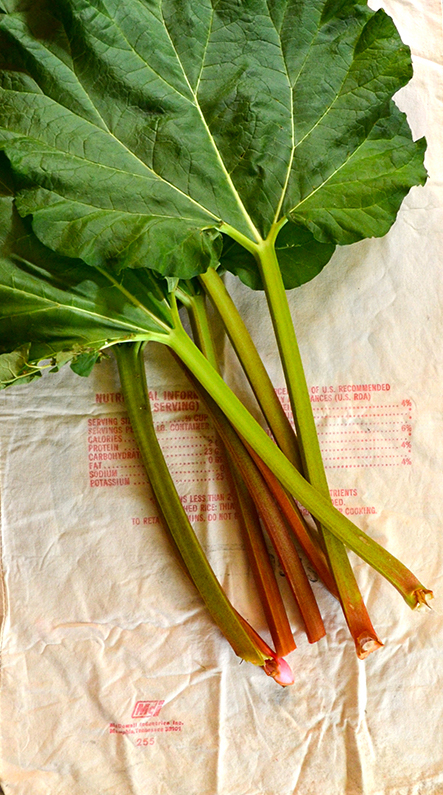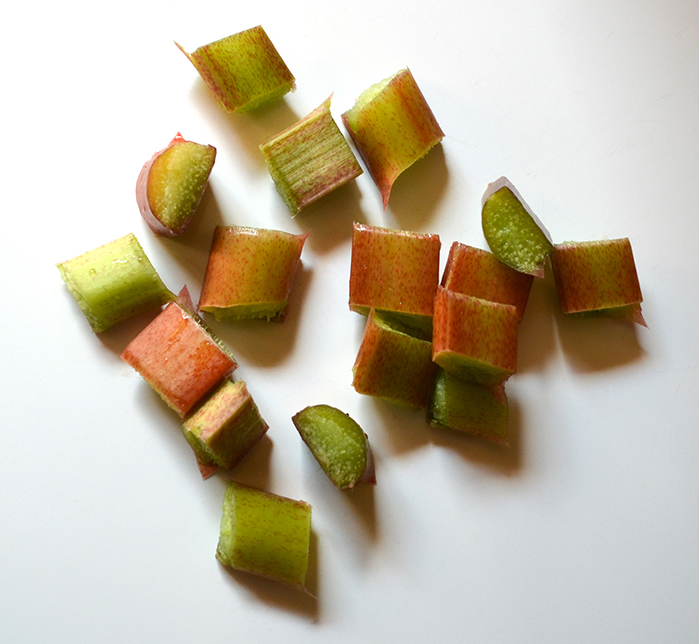Flavor your next dessert with rhubarb.
By Jennifer Cisney
People have argued for years over whether rhubarb is a fruit or a vegetable. While it’s considered a vegetable botanically, most cooks consider it a fruit. In 1947 a New York customs judge tried to settle the argument by legally declaring it a fruit. The cooks may have won that round, but the botanists haven’t given up, and the controversy continues. Could this be why Merriam Webster states that the word “rhubarb” can also mean “a heated argument or dispute”?
Rhubarb is most often used in desserts such as crumbles, pies, and tarts, so much so that another name for it is “pie plant.” Aside from stirring up the fruit/veggie controversy, rhubarb has a lot going for it. The rich, tart stalks are low in calories, fat, sodium, and cholesterol while high in fiber. Rhubarb is also a source of vitamins A, C, and K, and minerals potassium and calcium.
The rhubarb pictured here was picked from a row of plants at Wilson College’s Fulton Farm. Rhubarb is very easy to grow, taking up little room, and tolerating the cold. It actually does better in cooler climates, making it more common in northern states. The plants don’t require much care and do not have problems with disease or pests. Since rhubarb is a perennial, like asparagus, it will produce stalks for five to 20 years. Rhubarb is one of the first treats in the garden ready to harvest in late spring/early summer. The redder the stalk, the sweeter it will taste. Some folks will eat the stalks fresh, simply dipped in sugar.
Avoid the leaves, however. They are toxic because they contain oxalic acid. Rhubarb first grew in Asia, where it was used as a medicinal plant. It was imported from China to Europe in the 160os and later brought to North America. In the early 1770s, Benjamin Franklin sent seeds to horticulturalist John Bartram in Philadelphia.
The historical record doesn’t say if the men got into a rhubarb about the seeds growing into vegetables or fruits. Perhaps the one thing we can all agree on is that rhubarb is, in fact, delicious.
Rhubarb Syrup
Use this syrup to pour over ice cream, fold into whipped cream, or mix with lemonade or sparkling water.
Ingredients
4 cups of chopped rhubarb 1 tsp vanilla extract
1 cup sugar
1 cup water
Instructions
Bring the rhubarb, vanilla, sugar, and water to a boil while stirring. Simmer for four minutes until the rhubarb is soft. Strain out the solids, let cool, and store in a jar or bottle.
Classic Rhubarb Crumble
This dessert is simple and easy to make. Try adding in other fruits like strawberries or blueberries.
Topping Ingredients
1/3 cup oats
1 cup flour
1/2 cup brown sugar
1/4 tsp baking powder
1/4 tsp cinnamon
1/2 cup chopped cold butter 1/2 cup chopped walnuts Pinch of salt
Filling Ingredients
6 cups of chopped rhubarb 1 cup of sugar
1/2 tsp vanilla extract
1/4 tsp salt
3 tbsp of flour
Instructions
Mix the topping ingredients in a bowl. Toss the filling ingredients in a baking dish. Sprinkle the topping over the filling and bake at 375 degrees for 45 minutes or until topping is browned. Serve with whipped cream or ice cream.



